Hello.
My first post here. About two years ago, a friend of mine gave me his inflatable. The engine was stolen and he didn?t have the time. The boat has been sitting in the backyard at a friends house since then. But now I am fixing it up. Just bought a 1987 20hp Evinrude, so now I have the drive.
The boat has survived the "storage". Nothing seem broken and it holds air (since it is cold here now, it is a little hard to tell just how good it holds the air)
The transom was broken, so I am making a new one. The old one was fairly thick, so I laminated two plywoodpieces with epoxy glue and made a replica of the old transom. I am now applying epoxy to the whole thing and will have a two component polyurethane paint to finish it off.
The question is this: It seems the pvc was not glued to the transom originally. There are bolts going through the sides of the transom (see pictures), and the pvc coming up from the bottom of the boat was only screwed in place. However, I was told that I should glue the pvc in place if I want it to be solid. What glue should I use? (PVC glues to the transom).
The boat is an Eurovinil Dynamic 37. It is about 15-20 years old and was originally constructed as a offshore/divers workboat. It is 12 feet and can use up to 30hp engine.
This is the information printed on the boat:
Length: 375 cm
Width: 186 cm
Tube diameter: 49 cm
Nr. persons: 6
Max load: 880 kg
Max. horsepower: 20 hp
It also says max air load is 0.20 bar. Isn`t that very little?
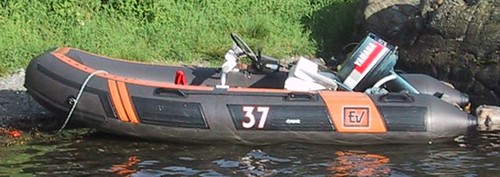
The boat when it was on the water.
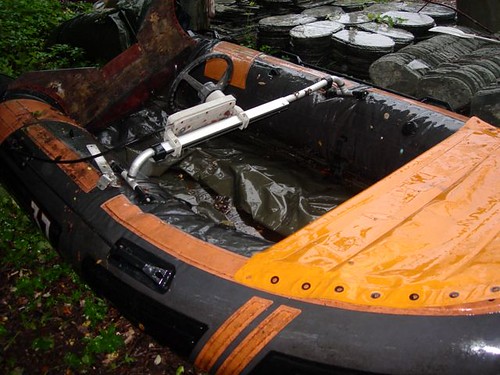
In storage at the friends backyard
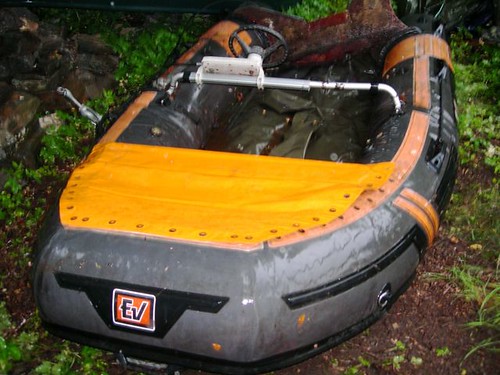
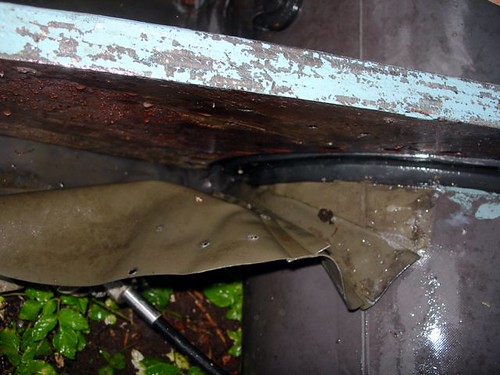
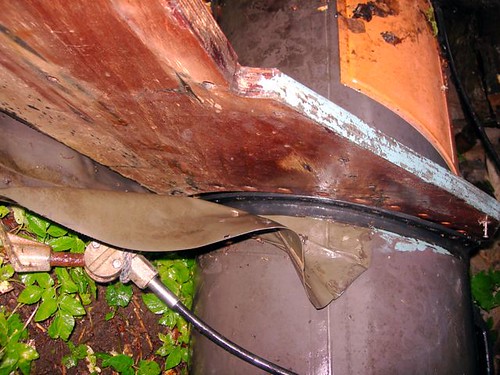
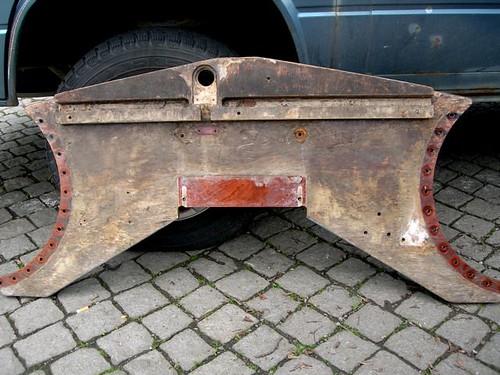
The old transom (inside the boat and of course upside down)
My first post here. About two years ago, a friend of mine gave me his inflatable. The engine was stolen and he didn?t have the time. The boat has been sitting in the backyard at a friends house since then. But now I am fixing it up. Just bought a 1987 20hp Evinrude, so now I have the drive.
The boat has survived the "storage". Nothing seem broken and it holds air (since it is cold here now, it is a little hard to tell just how good it holds the air)
The transom was broken, so I am making a new one. The old one was fairly thick, so I laminated two plywoodpieces with epoxy glue and made a replica of the old transom. I am now applying epoxy to the whole thing and will have a two component polyurethane paint to finish it off.
The question is this: It seems the pvc was not glued to the transom originally. There are bolts going through the sides of the transom (see pictures), and the pvc coming up from the bottom of the boat was only screwed in place. However, I was told that I should glue the pvc in place if I want it to be solid. What glue should I use? (PVC glues to the transom).
The boat is an Eurovinil Dynamic 37. It is about 15-20 years old and was originally constructed as a offshore/divers workboat. It is 12 feet and can use up to 30hp engine.
This is the information printed on the boat:
Length: 375 cm
Width: 186 cm
Tube diameter: 49 cm
Nr. persons: 6
Max load: 880 kg
Max. horsepower: 20 hp
It also says max air load is 0.20 bar. Isn`t that very little?

The boat when it was on the water.

In storage at the friends backyard




The old transom (inside the boat and of course upside down)



















